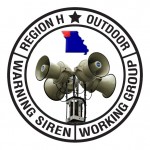In the aftermath of tornadoes which have ravaged both Missouri as well as other parts of the mid-west and mid-south, a common theme was noticed among emergency managers: The public heard the warning sirens sounding, but didn’t take action.
As a result of this observation, researchers began to decipher the answer to the question: Why do people not take protective action when they hear warning sirens sounding? While the they discovered was complex, it can be summarized succinctly. People have grown so used to hearing sirens sound with no negative consequences that they have no motivation to take protective action when they hear them. This lack of action can be traced to multiple causes, but the end result is the same: Lives are being lost due to public inaction when faced with advanced storm warning.
A group of emergency managers from Northwest Missouri, in concert with colleagues from regional councils of government, as well as both National Weather Service and broadcast meteorologists have undertaken a year-long project to hopefully spur change in the complacency the public has developed toward outdoor warning sirens.
As a result of this effort, the Region H Outdoor Warning Siren Working Group is proud to announce our release of a final document: Region H Outdoor Warning Siren Guidelines – Final.
This document is the culmination of months of intensive investigation, research, and work to determine what practices are best suited for advanced outdoor warning of severe weather. Our goal was to research and compile best practices for outdoor warning activation and testing, as well as providing resources for emergency managers to enable the better protection of the public.
Our goal is to follow this document with a white paper detailing the process used to develop the guidelines. Another sub-group has spun off of this project who are developing practices for leveraging of social media in emergency management and public information.
While this document has been released, it will continue to evolve as further research dictates changes in the way emergency warning should be disseminated.
